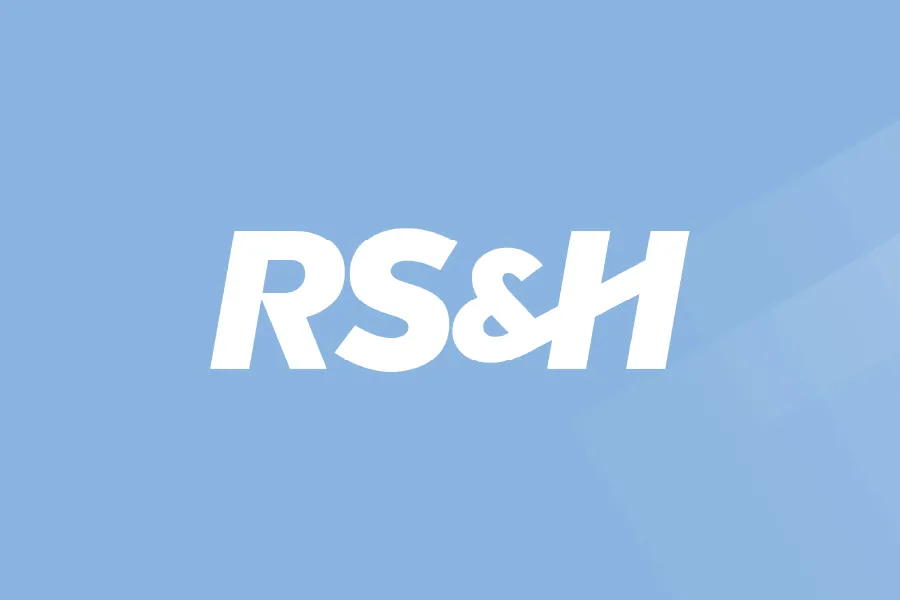RS&H Continues 50-Year Legacy with NASA

RS&H designs have been integral to NASA’s missions since the 1960s, directly advancing the nation’s capabilities to reach space. Our history with Launch Pad 39B and the Mobile Launchers (MLs), two key facilities at Kennedy Space Center in Florida, have been at the forefront of shaping our legacy of serving NASA. This legacy continues to grow as we design groundbreaking projects that help advance our nation’s space exploration.
NASA’s current mission revolves around the Space Launch System (SLS), a heavy launch vehicle that will ultimately lift astronauts and space hardware to beyond low earth orbit destinations, such as asteroids, the Moon, and Mars.
“The SLS vehicle will launch from Launch Pad 39B atop a newly configured ML,” said recently retired RS&H Aerospace & Defense Practice Director Wayne Finger. “RS&H has been actively planning, designing, rehabilitating, and expanding both the launch pads and MLs, since the Apollo Program.”
For the Apollo Program in the 1960s, RS&H designed three MLs. Saturn V rockets were assembled on the MLs, transported out to the launch pad, and launched off the MLs.
In the 1970s and 1980s, RS&H designed three Mobile Launcher Platforms (MLPs), as well as Launch Pad 39B for the Space Shuttle Program. Space shuttles (a collective term for the launch vehicles, which includes the orbiter, external tank, and solid rocket boosters) were assembled in the Vehicle Assembly Building atop MLPs and then transported to the launch pad by huge crawler transporters, which were originally designed for the Apollo MLs, and are still in use. MLPs, and the base structure of the MLs, are 133 feet-by-158 feet-by-25 feet high, with two floors inside filled with facility systems, such as HVAC, plumbing, and fire protection, as well as specialized electrical and electronic equipment, fluids, high pressure gases, and cryogenic systems, which serve the launch vehicle. The MLs also boast open frame towers reaching about 360 feet above the base structure, and only about 25 feet away from the rocket’s heavy exhaust blast.
RS&H also designed the Rotating Service Structure (RSS) and the Fixed Service Structure (FSS) on Launch Pad 39B for the Space Shuttle Program. The RSS rotated into place around the space shuttle for loading satellites and components of the International Space Station from a clean room on the RSS into the payload bay of the orbiter. Prior to launch, the RSS would rotate out of the way. The RSS also provided a measure of weather protection and access to certain external areas of the orbiter while on the pad. Recycling the RS&H designed Apollo/Saturn V Mobile Launcher Umbilical Towers, RS&H designed the FSS, which provided a permanent means of access to the launch vehicle for crew and commodities, and also provided lightning protection.
In 2006, the Constellation Program was initiated to gain experience operating beyond Earth’s orbit, developing technologies needed for opening the space frontier, and conducting fundamental science. Under this program, Ares I was the crew launch vehicle slated by NASA to replace the space shuttle for human launch missions. In preparation for Ares I, the FSS was demolished, and RS&H designed the current lightning protection system around Launch Pad 39B, which consists of three, 600-foot-tall lightning protection towers with interconnecting catenary cables to protect the flight vehicle and associated launch equipment from lightning strikes during launch processing and other activities at the launch pad prior to flight.
“One of the challenges of the new ML design, which needed to serve the same function as the MLPs, was a critical weight limitation with a much heavier launch vehicle,” recalled Jim Stapp, Leader – Mobile Launchers.
With the requirement for a 360-foot-high tower atop the ML base (like Apollo again), the design team was tasked to provide innovative solutions, which included hollow structural sections for the tower structure and a hybrid construction (combination of tubular trusses and 25-foot deep girders) for the base.
The Constellation Program, including Ares I, was canceled in October 2010. But in September 2011, NASA announced the SLS as its current vehicle for human exploration beyond Earth’s orbit. RS&H had already completed designs, and the ML and some pad features had completed construction prior to full development of the change in NASA’s direction. New RS&H designs are adapting NASA’s existing launch infrastructure to fit the SLS. Currently, RS&H is providing construction administration services for these modifications.
For the SLS, modifications have been made to Launch Pad 39B, as well. The photograph to the right shows the Ares I ML at Launch Pad 39B after the demolition of the FSS and the RSS.
“This photograph was taken while RS&H was designing the multiple upgrades to Pad 39B, all to support the SLS Program,” added Finger.
RS&H also provided design and construction administration services for the new pad deck to ML elevators, the mechanical utility interface platform, and the electrical interface platform. RS&H has also been heavily involved in the study, design, and construction administration of the pad’s new flame trench and flame deflector. Further, we recently began the design for installation of the SLS ground support equipment (GSE) and ground support systems (GSS) for the SLS.
“The launch pad and MLs are just two of the facilities that we have a rich history working on,” said Josh Saltsman, Leader – Launch Pads. “There are very few firms in the industry that have such an extensive project history with the nation’s launch facilities.”
–By Josh Saltsman, Jim Stapp, and Lisa Thoele